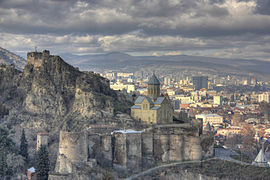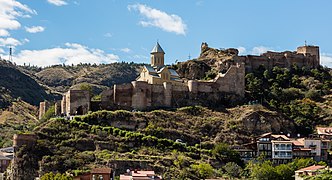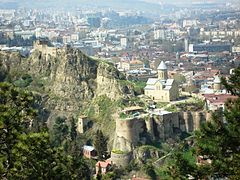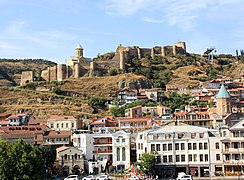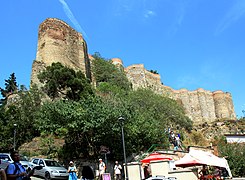Narikala
| Narikala | |
|---|---|
ნარიყალა | |
AMSL | |
| Official name | Narikala |
| Designated | October 1, 2007 |
| Reference no. | 4696 |
| Item Number in Cultural Heritage Portal | 3616 |
| Date of entry in the registry | October 11, 2007 |
| Accounting Card / Passport # | 010506503 |
Narikala (
botanical gardens of Tbilisi. On the lower court there is the recently restored St Nicholas church. Newly built in 1996–1997, it replaces the original 13th-century church that was destroyed in a fire. The new church is of "prescribed cross" type, having doors on three sides.[1] The internal part of the church is decorated with the frescos showing scenes from both the Bible and the history of Georgia.[2]
History
According to the legend it was built by the king
Vakhtang I Gorgasali of ancient Kingdom of Iberia
.
Archaeological studies of the region have however revealed that the territory of Tbilisi was settled by humans as early as the
Persians
, but was recaptured by the kings of Kartli by the middle of the 5th century.
David the Builder (1089–1125), respectively. The Mongols renamed it the "Narin Qala" (i.e., "Little Fortress"). Most of extant fortifications date from the 16th and 17th centuries. Rostom, the Safavid-appointed vali/king of Kartli, fortified the surroundings of the fortress and transferred control of the fortress to the Iranians.[6]
In 1827, parts of the fortress were damaged by an earthquake, and were subsequently demolished.
Gallery
-
View from the center of Tbilisi.
-
Wall at the rear part of the fortress.
-
View by night.
-
St Nicholas church.
-
Interior of St Nicholas church.
References
External links
Wikimedia Commons has media related to Narikala.

